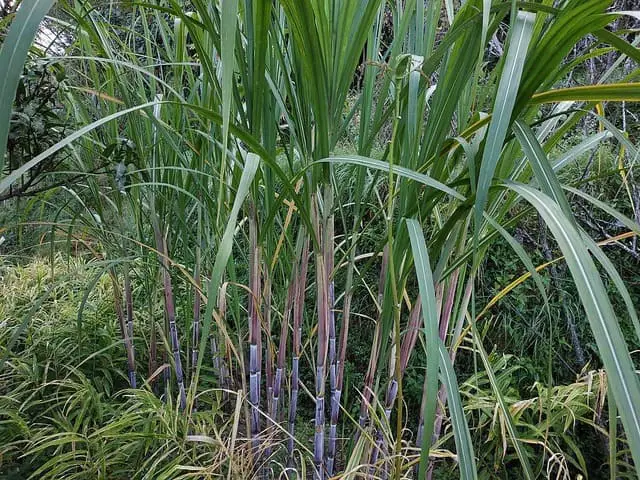Rum is made from molasses or straight from the sugarcane juice. You can ferment the juice or ferment then distill it to make wine. Popular amongst pirates in the old days, rum has made its way into every bartender's favorite drinks. With its vast sugarcane plantation, Cuba, Brazil and Argentina really took the world by storm with their Bacardi cachaça, and basi wine.
But little known to many people, far away in the highlands of some mountainous areas, tribal folks have also been making alcohol from local sugarcane to treat their guests on special occasions. Or to keep warm on cold winter nights and to aid digestion on a day-to-day basis.
Let's take a raw look now into how the rum is made:
Choosing the Sugarcane
At that time, when the sugarcane presser machine was not yet a thing, this is what the people built to juice the cane:
/sugarcane-pressure-machine.jpg)
As you can imagine, with such force and pressure, the only type of sugarcane that can withstand it is one that has a thicker outer shell (or bark). Because of that, harder sugarcanes are used as they don't break in half during juicing. They are quite 'flexible'.
Also, the fiber of the cane stays together well. Meaning they don't crumble apart easily under pressure. This helps it retain its overall shape even for the second and third press.
Depending on the variety and height, some cane may reach up to 4-5 meters (13-16 feet) tall. People cut the hard cane in half for easier juicing.
Often 40-50 canes will make up one vat of wine. If we use molasses, roughly one ton will produce 3800 liters (over 1000 gallon) of wine. With very good sugarcane, 35-50 liters of 96% alcohol can be made.
It is good to choose a variety that has good sweetness (BRIX score), fuller flavor in the juice, a nice aroma and even better one that produces quite a lot of juice. In the tribes, they grow a local variety called A-roong. It has a very nice aroma.
>> You can check out more sugarcane varieties here:

And now to the:
The Wild Yeast
As the yeast used to activate the fermentation, people use the bark of a local forest tree. The tree grows a hard-wooden trunk on hilly areas or in established forests. Sometimes, on a forest scavenger, it takes 2-3 days of hunting around to find one of these trees.
Its wood is very solid and heavy. It may take up to 10-20 years before the bark can be collected, the point at which the tree grows to about 1 meter (3 feet) in diameter.
There are two types of bark usually, the thick one and the thin one. The thick bark will make for more a more bitter, astringent wine while the thin one makes the wine taste milder.
The Fermentation Process
The fermentation process is actually quite simple. The hard-work, labor-intensive part is finding, getting and processing the ingredients. Which now is all done.
With the collected juice, people put it on a boil to kill of any bad bacteria. Then, the juice is mixed with the yeast liquid made from tree bark. This mixture is then poured into a jar and let ferment.
As the yeast and juice blends together, after about 3 days of fermenting the mixture will be ready to use. These are the first drops. For special occasions, people let it ferment for longer up to a month.
What Does The Rum Look & Taste Like?
The end wine has a clear warm golden color like that of amber. It has that sweet scent of sugarcane juice. Upon sipping, it gives a bitter, astringent taste. However, as it flows through the throat, the wine leaves a soothing, sweet after-taste that is very pleasant. It also won't give you any headache.
Distillation can also be used to raise the ABV up. With skillful distilleries, they can get it up to 60 with 45-50 being the average. With these, you may feel the burn and heat spreading throughout your body.
Thanks:
Share or pin this post!



